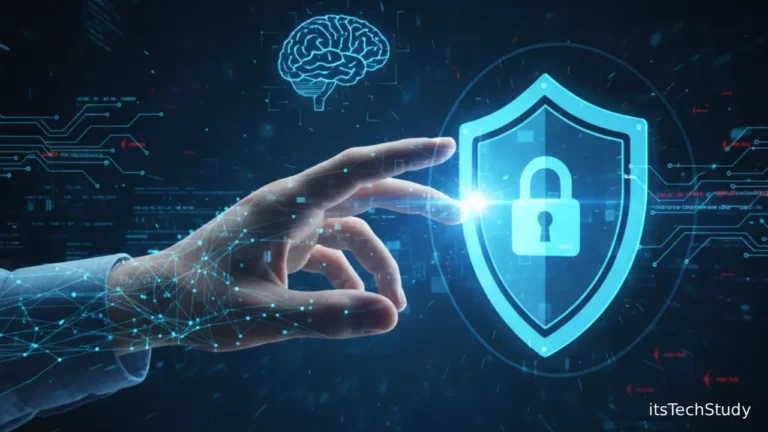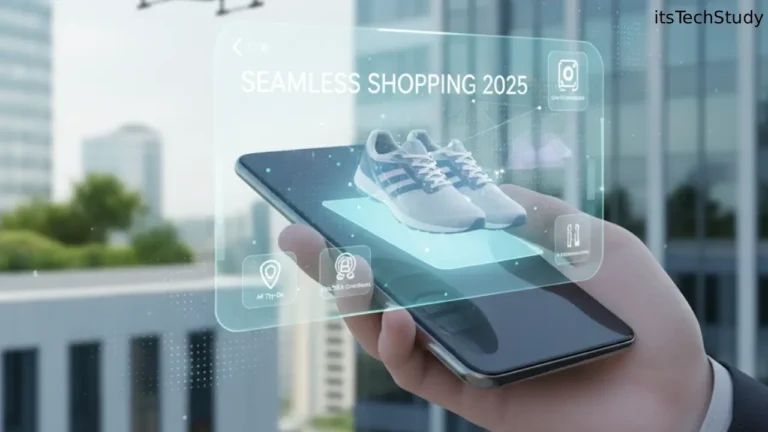Introduction: The Connected World’s Hidden Risk
The Internet of Things (IoT) has redefined how we live, work, and interact with technology. From smart thermostats that learn your routine to industrial sensors optimizing energy use, IoT devices are at the heart of today’s digital transformation. According to Statista, over 17 billion connected IoT devices are currently active worldwide, and that number is expected to exceed 29 billion by 2030.
But here’s the challenge: every new connection introduces a new potential entry point for cybercriminals. The same connected systems that make our lives easier also expose us to greater cybersecurity risks. In an age where data is currency, securing IoT infrastructure is no longer optional – it’s the foundation of sustainable innovation.
This article explores how cybersecurity isn’t just protecting IoT – it’s fueling its growth. As technology evolves, robust cybersecurity frameworks are enabling safer, smarter, and more resilient IoT ecosystems.
The Evolution of IoT and the Rising Security Challenge
From Convenience to Critical Infrastructure
In the early days, IoT devices were seen as simple tools – smart light bulbs, fitness trackers, or connected speakers. Today, IoT underpins entire industries:
- Healthcare: Wearable medical devices monitor patient vitals in real-time.
- Manufacturing: Smart factories use IoT for automation and predictive maintenance.
- Transportation: Connected vehicles and logistics systems rely on IoT for route optimization and safety.
- Smart Cities: IoT powers street lighting, waste management, and traffic control.
With this expansion, the stakes have skyrocketed. A security breach isn’t just an inconvenience – it can disrupt supply chains, compromise patient health, or even endanger lives.
Why Cybersecurity Is the Backbone of IoT Innovation
Cybersecurity and IoT are no longer separate fields. They are mutually dependent – the success of one ensures the safety of the other.
1. Data Integrity and Trust
IoT devices constantly collect and exchange sensitive data. If this data is altered or intercepted, it can lead to faulty operations or privacy violations. Cybersecurity ensures data integrity, allowing businesses and users to trust the data-driven insights IoT delivers.
2. Continuous Connectivity Demands Continuous Protection
IoT operates 24/7 – meaning security must too. Traditional “perimeter defense” models are ineffective in decentralized IoT networks. Instead, continuous monitoring and zero-trust frameworks are becoming essential for maintaining protection at every connection point.
3. Fueling Innovation Through Confidence
When developers and industries trust their systems are secure, they innovate freely. Secure platforms encourage experimentation with AI-driven IoT, autonomous vehicles, and smart infrastructure without the fear of catastrophic breaches.
Table: Key Cybersecurity Measures for IoT Systems
| Security Measure | Purpose | Example Technology/Practice |
|---|---|---|
| Device Authentication | Verifies the identity of connected devices | Public Key Infrastructure (PKI), certificates |
| Data Encryption | Protects data in transit and at rest | AES, SSL/TLS, End-to-end encryption |
| Firmware Updates | Patches vulnerabilities and adds protection | OTA (Over-The-Air) updates |
| Network Segmentation | Limits spread of breaches | VLANs, Firewalls, Micro-segmentation |
| Zero-Trust Architecture | Validates every access attempt | Identity-based access control |
| Anomaly Detection | Detects abnormal device behavior | AI and ML-based monitoring systems |
How Cybersecurity Enables New Waves of IoT Innovation
1. Smart Cities with Secure Infrastructure
Cities around the world are deploying smart grids, automated traffic systems, and connected surveillance. Cybersecurity ensures these systems remain operational and tamper-proof, supporting the growth of safe, intelligent urban ecosystems.
2. Industrial IoT (IIoT) and Operational Safety
In factories, IoT sensors optimize production and detect faults before they occur. Strong cybersecurity ensures that industrial control systems are not hijacked or manipulated – protecting both productivity and human safety.
3. Healthcare IoT (IoMT) and Patient Privacy
From connected pacemakers to remote monitoring apps, healthcare IoT devices require the highest level of data protection. Cybersecurity guarantees patient confidentiality while enabling telemedicine and continuous care innovations.
4. AI-Powered IoT and Predictive Defense
Artificial intelligence and IoT are merging to create smarter systems. Cybersecurity, infused with AI, helps detect and neutralize threats in real-time – building a self-defending IoT ecosystem.
Pros and Cons of IoT-Driven Cybersecurity Integration
Pros:
- Enhanced protection for sensitive data and infrastructure
- Improved trust among users and stakeholders
- Encouragement of innovation in high-risk sectors (healthcare, manufacturing, etc.)
- Compliance with global data privacy regulations (GDPR, HIPAA, etc.)
Cons:
- Increased implementation costs
- Complexity in managing large-scale device networks
- Risk of performance trade-offs with heavy encryption
- Requires constant updates and maintenance
Best Practices for Securing IoT Devices
- Use Strong Authentication: Replace default passwords with robust credentials or biometric verification.
- Keep Firmware Updated: Regular updates prevent exploitation of known vulnerabilities.
- Adopt a Zero-Trust Model: Verify every device and connection before granting access.
- Encrypt All Communications: Protect data traveling between devices, networks, and clouds.
- Segment IoT Networks: Separate IoT devices from critical systems to minimize attack spread.
- Enable Real-Time Monitoring: Use AI-driven analytics to detect unusual patterns or intrusions.
- Educate Users and Teams: Human error remains one of the biggest cybersecurity risks.
The Role of Governments and Industry Standards
To standardize IoT security, governments and organizations are implementing stricter frameworks:
- ISO/IEC 27001: International standard for information security management.
- NIST Cybersecurity Framework: Guidelines for identifying and managing cybersecurity risks.
- IoT Security Foundation (IoTSF): Promotes secure-by-design practices for IoT manufacturers.
- GDPR & HIPAA: Ensure personal data protection and compliance in IoT environments.
These standards not only improve accountability but also pave the way for interoperable and secure innovation across global markets.
Emerging Cybersecurity Technologies Transforming IoT
1. Blockchain for IoT Security
Blockchain offers decentralized authentication, ensuring transparent and tamper-proof device communication. It’s particularly effective for supply chain traceability and secure device-to-device communication. Learn more about Blockchain
2. AI and Machine Learning Defense Systems
AI can analyze traffic patterns, detect anomalies, and predict cyberattacks before they occur – critical for IoT networks that operate autonomously.
3. Quantum-Resistant Encryption
As quantum computing advances, traditional encryption could become obsolete. Emerging quantum-resistant algorithms aim to future-proof IoT devices against next-generation threats.
Conclusion: A Secure Path to a Smarter Future
The Internet of Things is reshaping the modern world – from the way we manage our homes to how industries function at scale. Yet, as IoT networks grow in size and complexity, cybersecurity becomes the invisible force powering their progress.
By embedding strong security principles into IoT design, organizations can innovate without fear, users can trust their devices, and societies can benefit from safer, smarter technologies.
In the next decade, IoT and cybersecurity will no longer be separate conversations – they’ll be two sides of the same coin, defining the reliability, sustainability, and trustworthiness of our connected future.
Frequently Asked Questions (FAQ)
Q1: Why is cybersecurity essential for IoT?
Ans: Because IoT devices connect to vast networks, any unprotected device can become a gateway for cyberattacks. Cybersecurity safeguards data integrity, privacy, and system reliability.
Q2: What are the biggest cybersecurity risks in IoT?
Ans: Weak passwords, outdated firmware, unsecured networks, and lack of encryption are the main vulnerabilities exploited by hackers.
Q3: How can businesses protect their IoT infrastructure?
Ans: By implementing strong authentication, continuous monitoring, data encryption, and adopting zero-trust architecture across all endpoints.
Q4: Is IoT security different from traditional cybersecurity?
Ans: Yes. IoT security focuses on interconnected devices that often lack processing power and memory, requiring lightweight yet effective protection mechanisms.
Q5: Can AI help improve IoT cybersecurity?
Ans: Absolutely. AI enhances threat detection, predicts vulnerabilities, and automates responses — making IoT systems more adaptive and resilient.
Q6: What is the future of IoT cybersecurity?
Ans: The future lies in AI-driven defense, blockchain authentication, and global regulatory frameworks that make security an inherent feature, not an afterthought.












No Comments Yet
Be the first to share your thoughts.
Leave a Comment